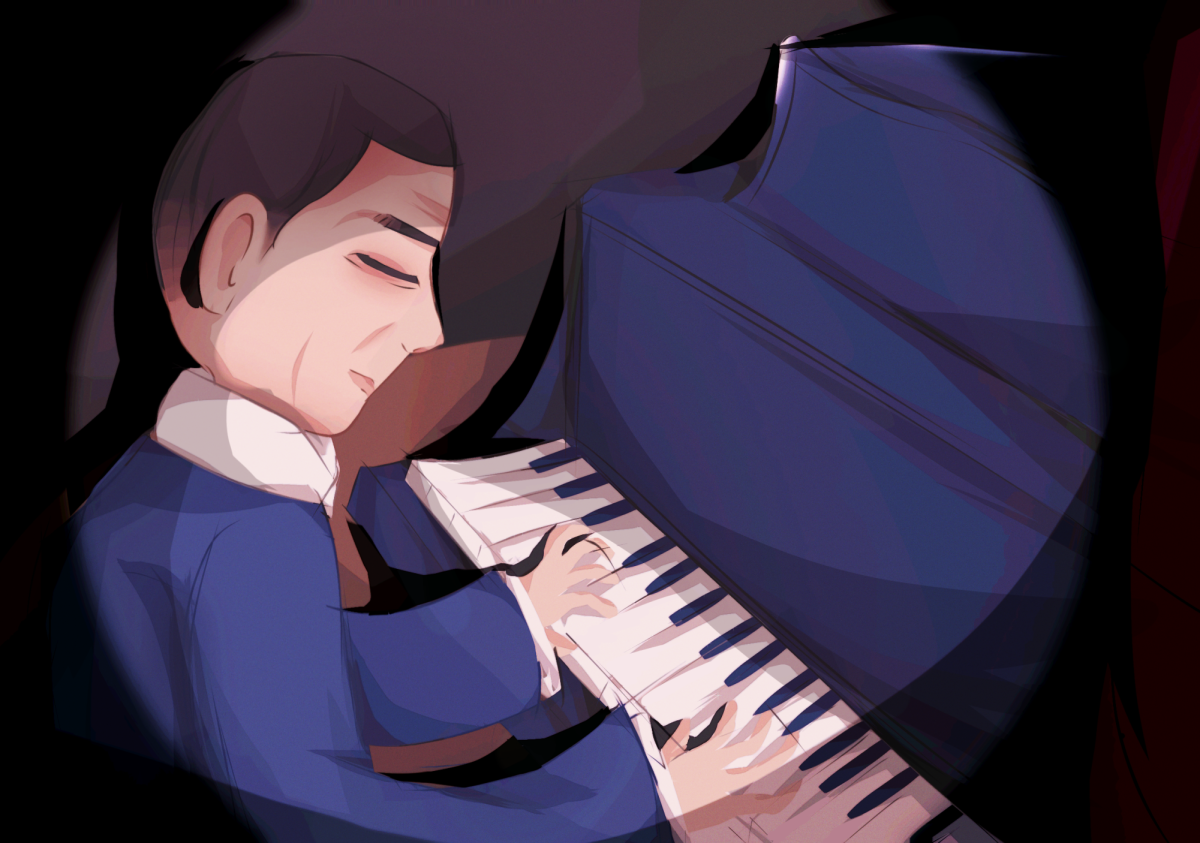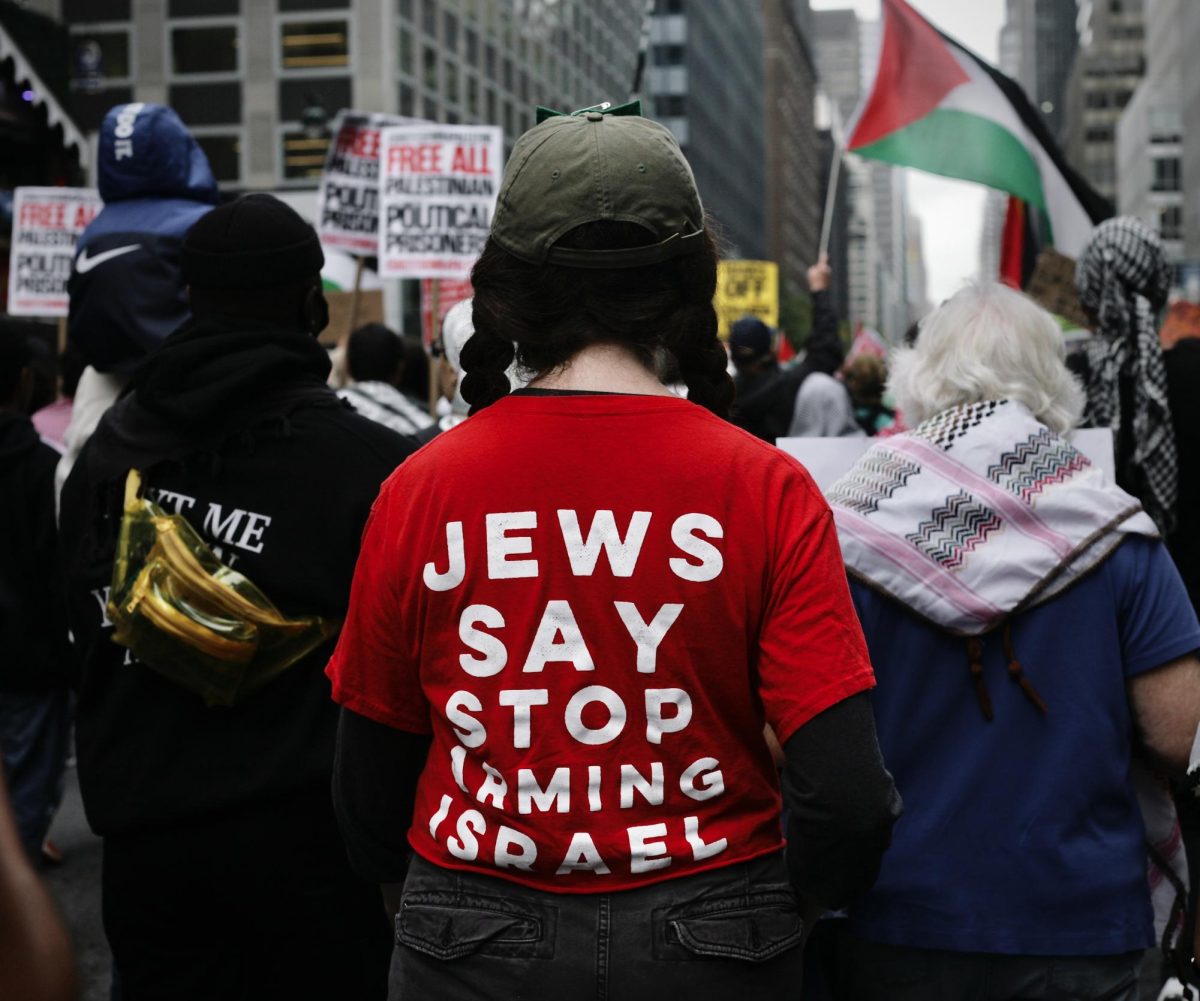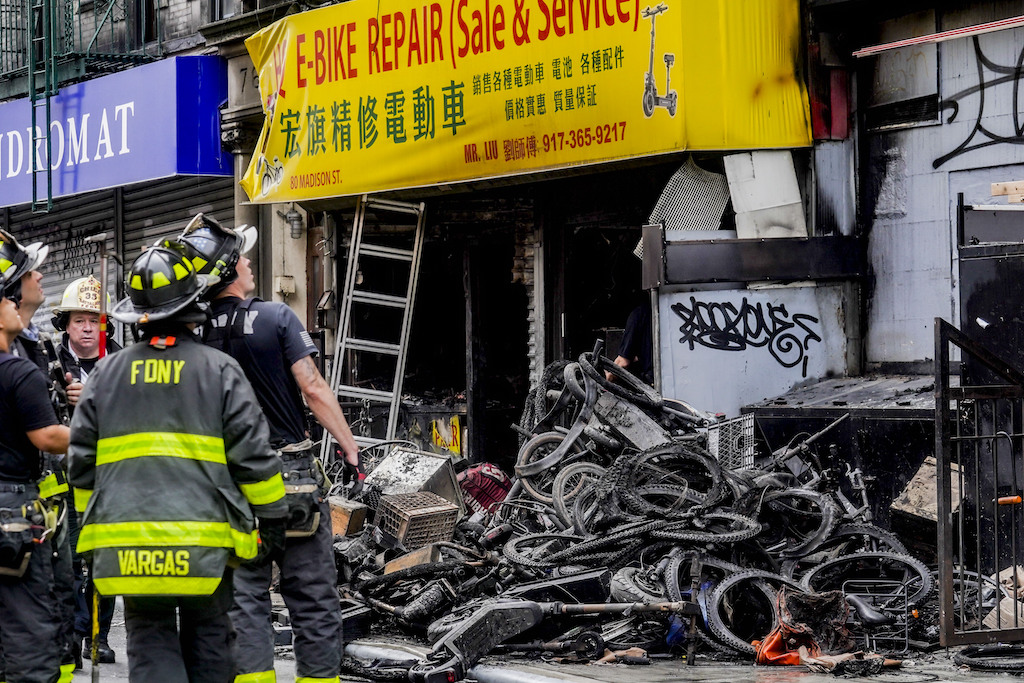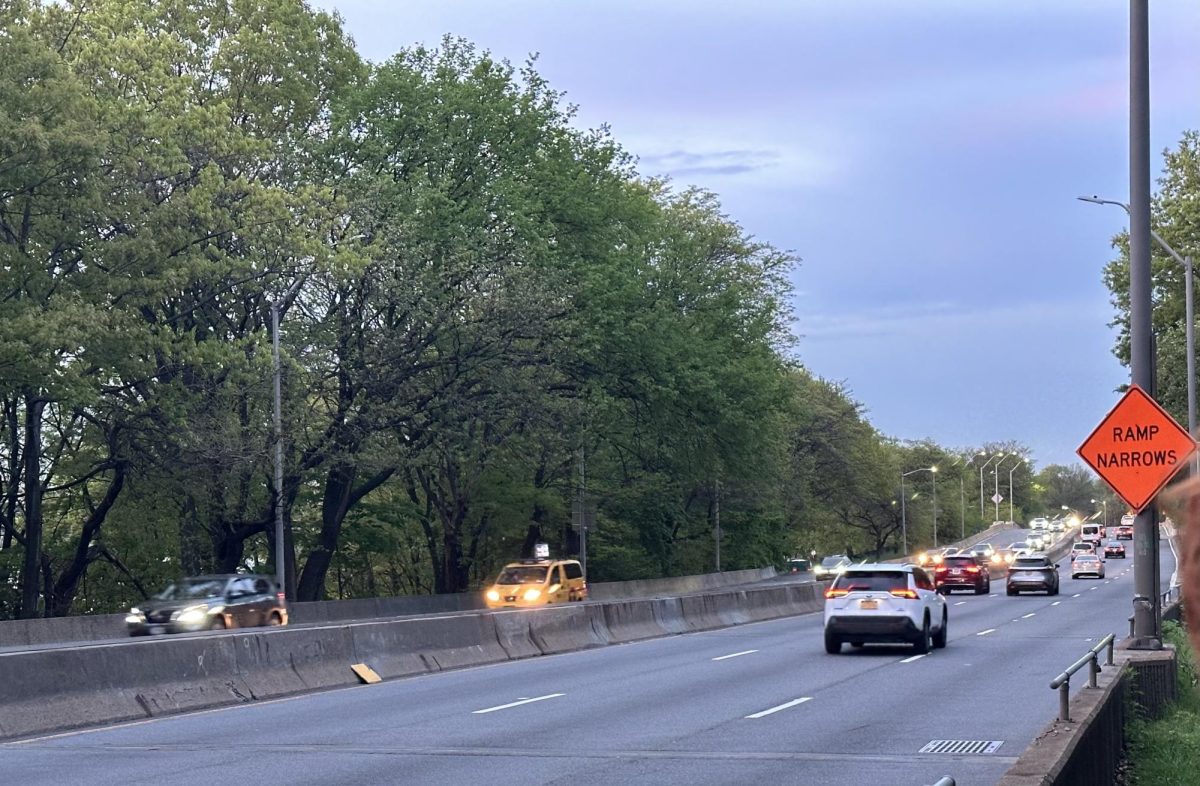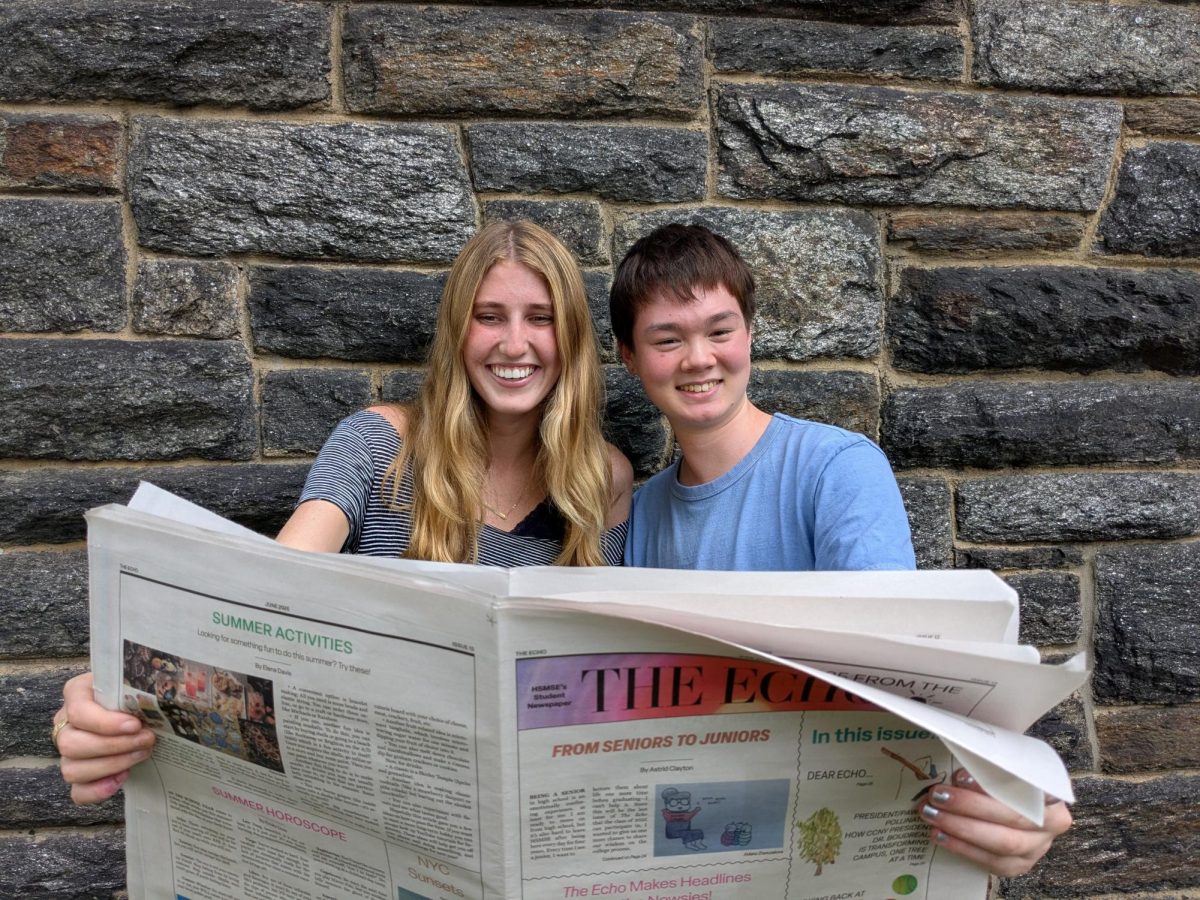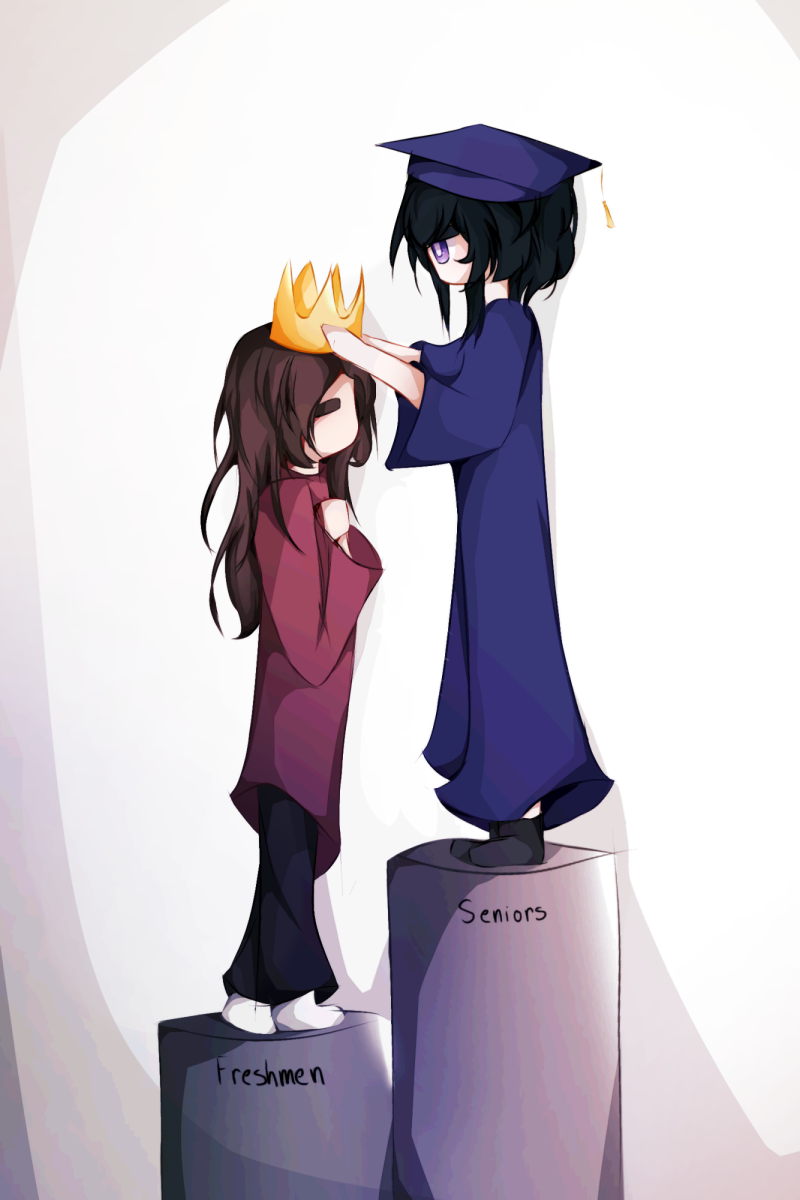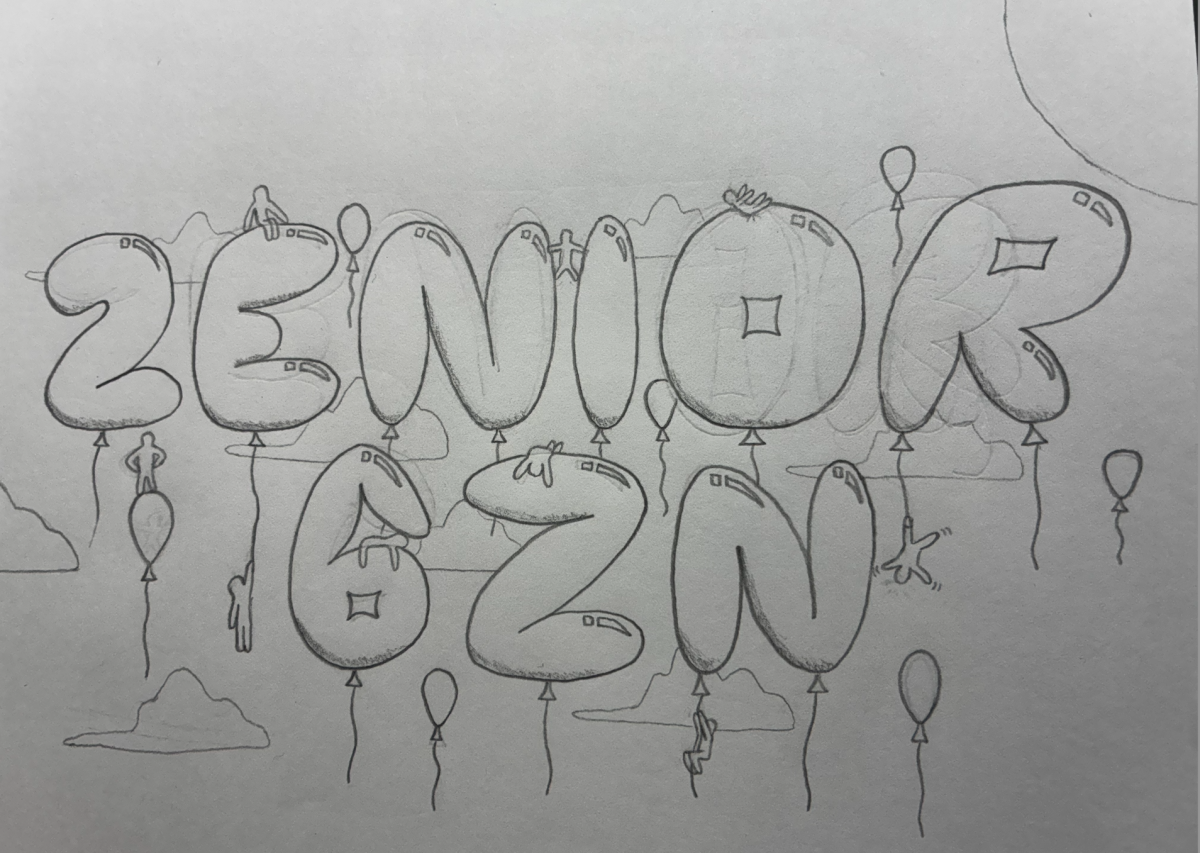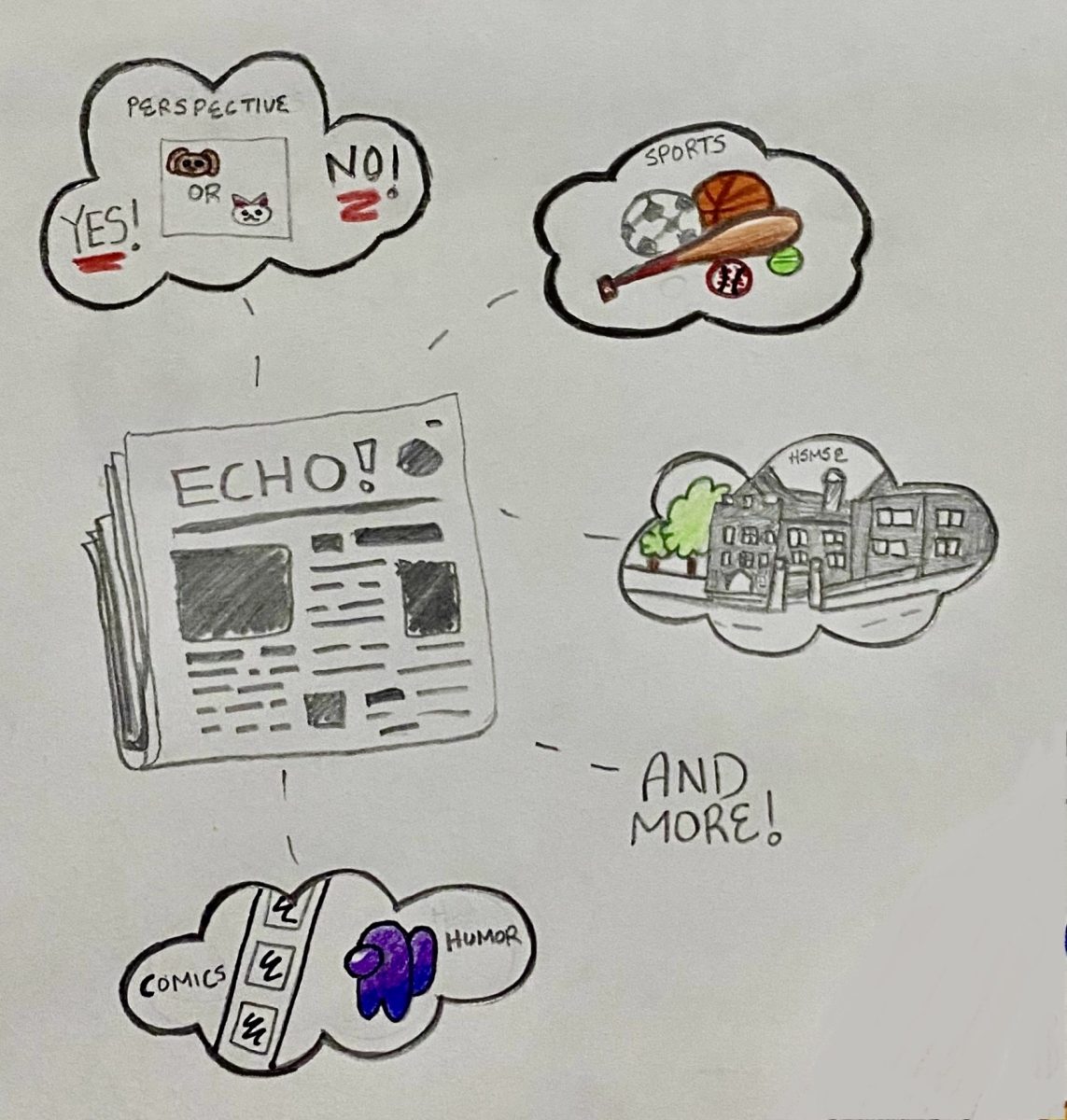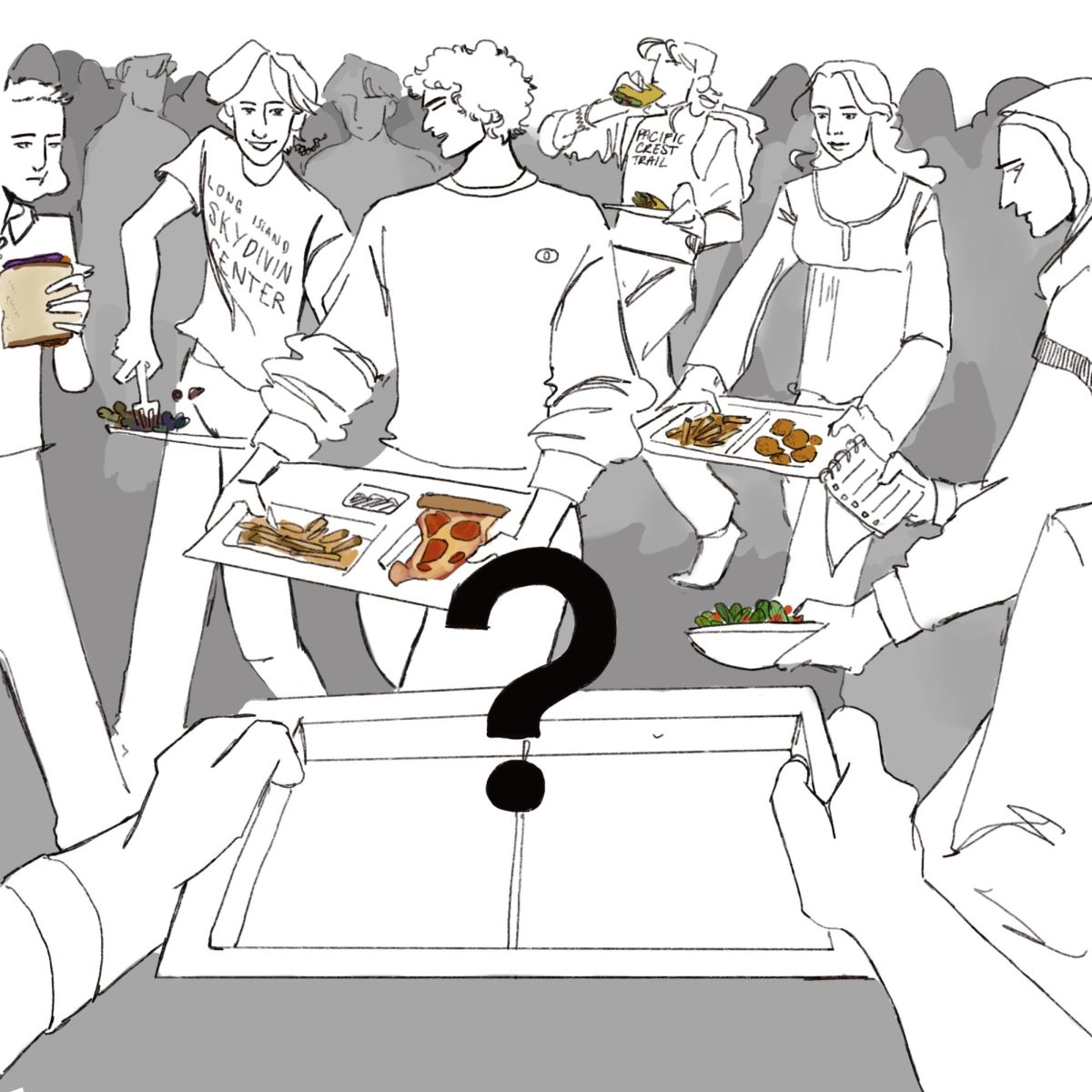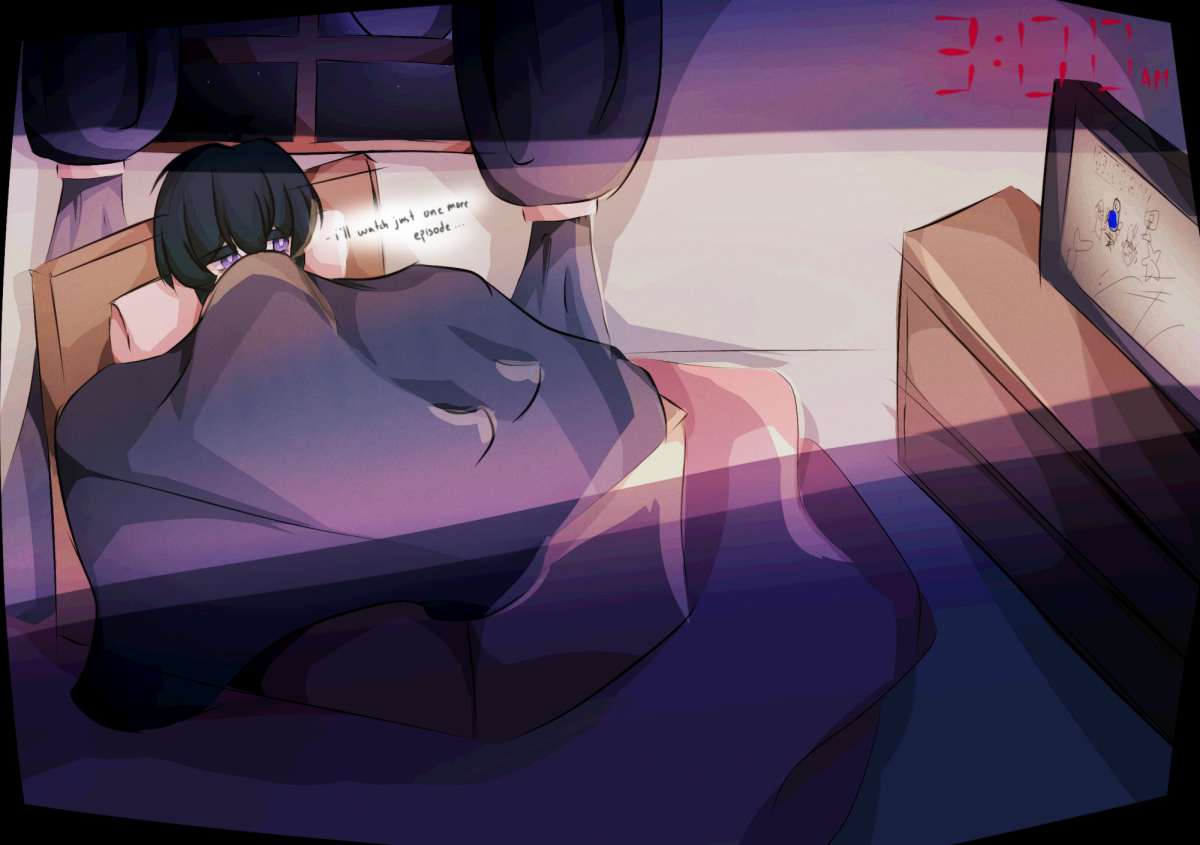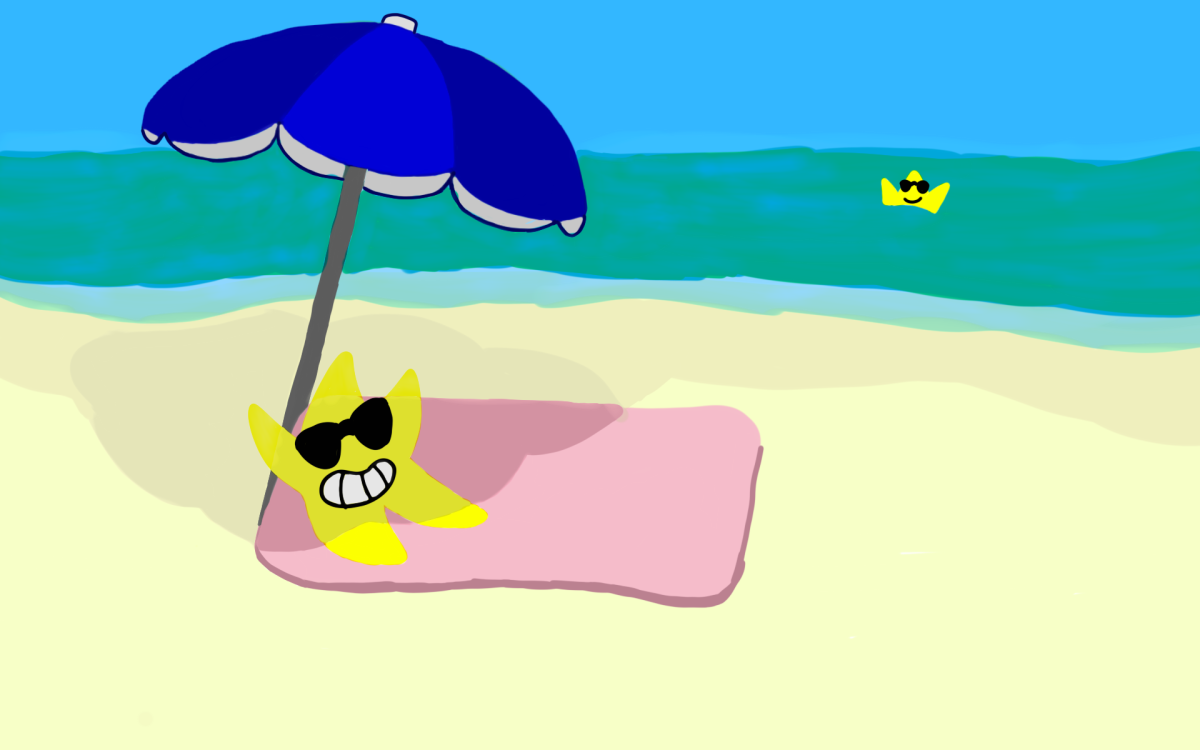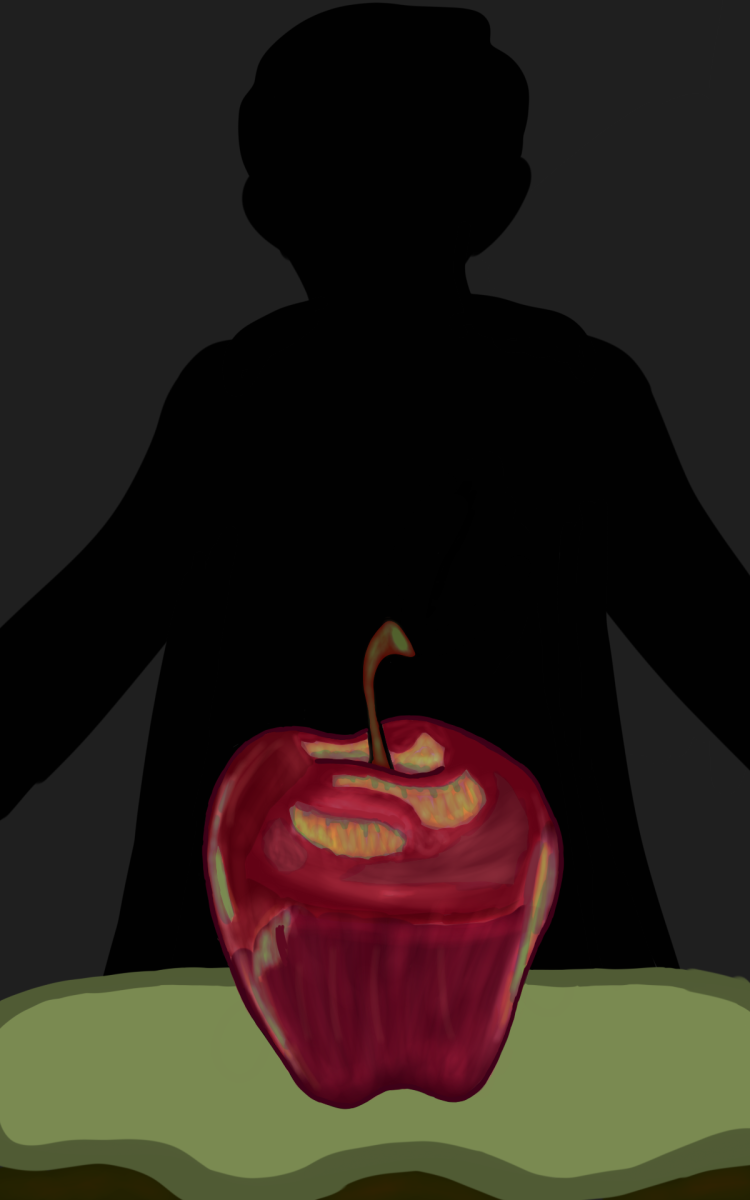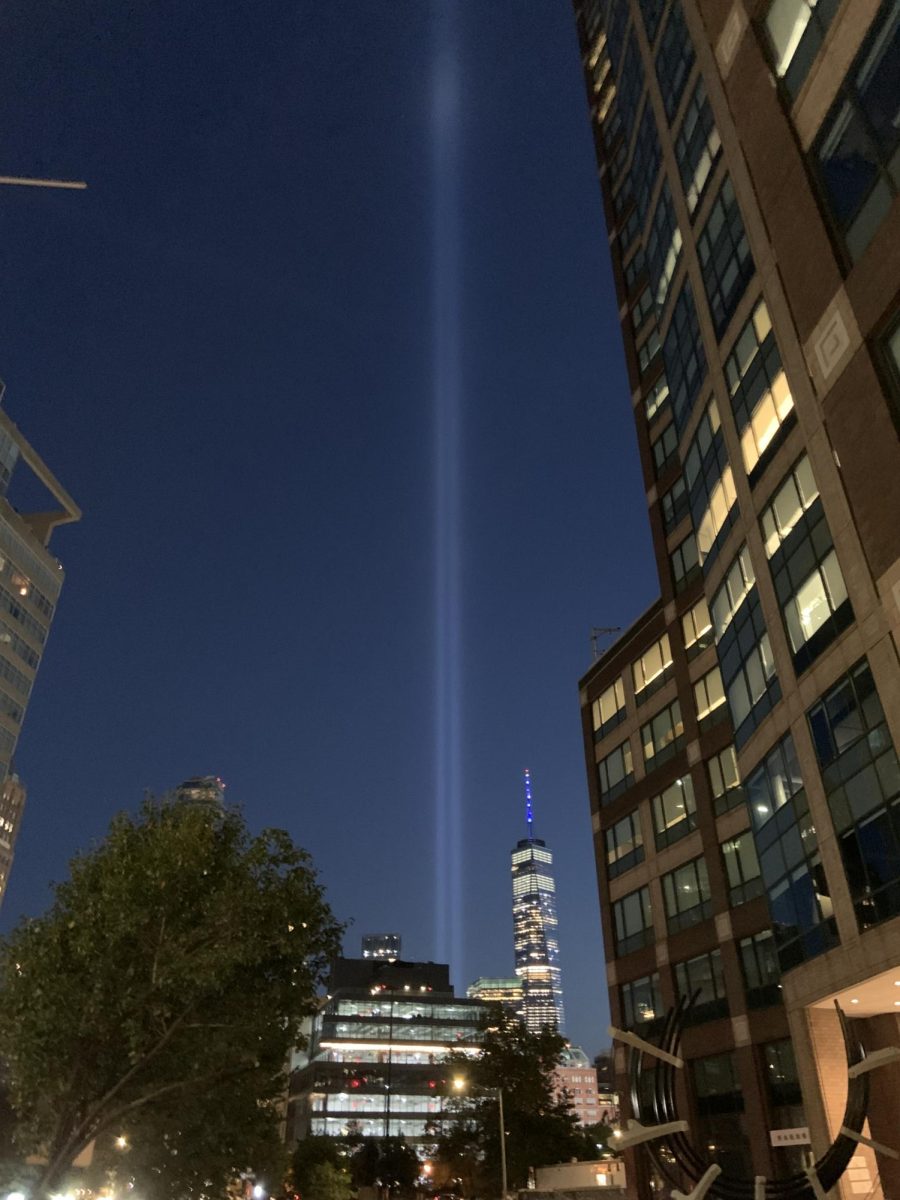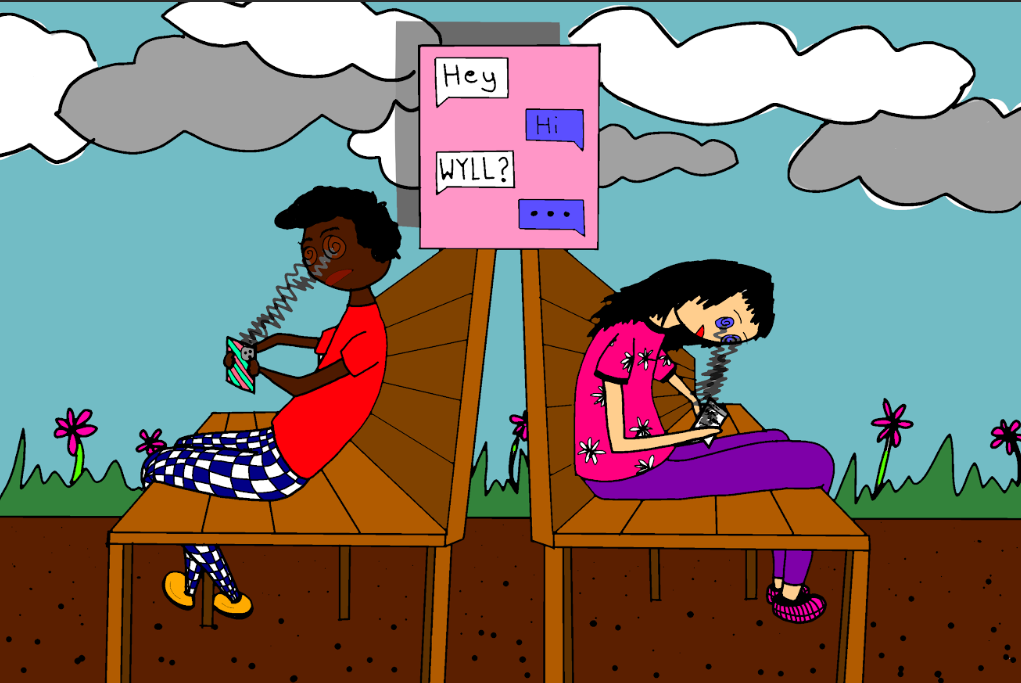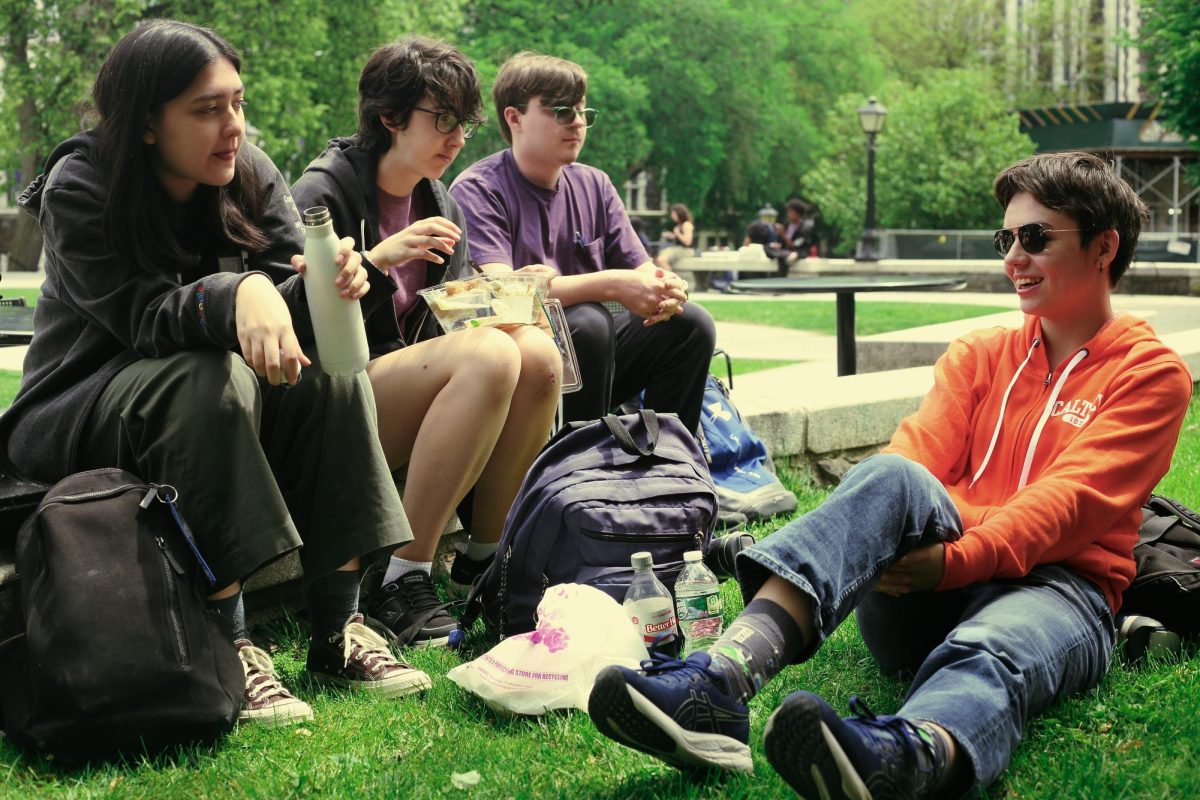Gareth’s Lists
Qualifier: This is only a listing of stations I have been to, curated based on design and things visible from within the station.
New York City
Honorable Mentions:
E 180 St (2/5)
149 St–Grand Concourse (2/4/5)
Livonia Av (L)
#10: Broadway Junction (A/C/J/L/Z)
This station has some cool stained glass, some odd platform shapes, three levels, yard views, and views of the L from the J/Z and vice versa. It may be overpopulated with pigeons, but the views more than make up for it. Very cool station.
#9: W 8 St–NY Aquarium (F/Q)
The walls of the station are designed to flow kind of like the body of a whale. This unique touch (fitting, considering it’s on Coney Island) combined with the cool views of trains leaving Coney Island-Stillwell Av on their way here, other curves around the station, and the ocean make the view here spectacular.
#8: Fulton St (A/C/J/Z/2/3/4/5)
This station has a sizable shopping center within it, opening in 2014. It’s a complex of four separate stations, three of which are aesthetically interesting. The roof is made of glass, and although it is a pain to navigate the really complex complex, rarely will one find a boring part (aside from the platform for the A and C trains).
#7: Atlantic Av/Barclays Ctr (B/D/N/Q/R/2/3/4/5)
From an oddly laid out station to an LIRR station, from an old station house to an arena, this station has plenty of fodder for urban explorers like myself. The Eastern Pkwy Line platform for the 2, 3, 4, and 5 trains has an odd layout, with the 4 and 5 express trains stopping at an island platform in the middle and the 2 and 3 local trains stopping at side platforms on the outside. From one of those local platforms, there is a neat view of the LIRR station, and one of them has a new type of turnstile (that didn’t accomplish its goal, but that’s a different story). The old station house in the triangle formed by 4th, Atlantic, and Flatbush Avenues is also quite nice.
#6: Prospect Park (B/Q/S)
This station is partly underground and partly in an open cut, which is partly covered by the street. It is served by the two-car Franklin Avenue Shuttle on one of the outside tracks, the other of which is used as a storage track for a spare shuttle train. One can see the street by looking up, and there is some nice foliage visible as well.
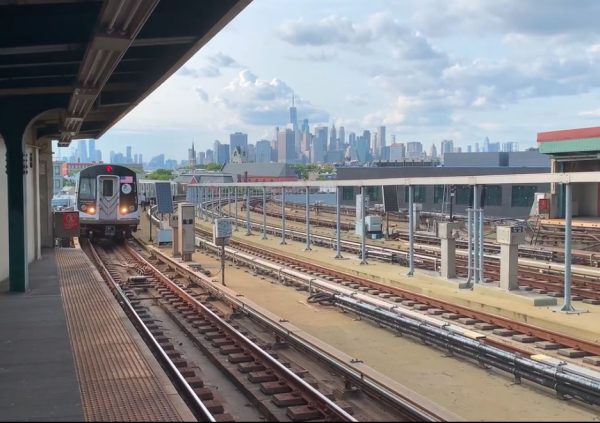
#5: Smith–9 Sts (F/G)
What makes this station shine is the view. At 88 feet above street level, the view of Manhattan and other parts of Brooklyn is remarkable. Plus, there is a curve, so foamer shots of trains here are epic.
#4: Harlem–148 St (3)
This station is situated just below street level, with a ramp down from the entrance to the platform. Natural light comes through in spite of the building on top. Being able to see the street at eye level is not something that can be done at any other subway station in Manhattan. And there’s a yard directly adjacent, to boot.
#3: Whitehall St–South Ferry (R/W/1)
The new 1 train platform, opened in 2009 and then closed again from 2012–2017 because of Hurricane Sandy, is the least interesting part of this station complex, and it’s still cool. It’s in a very modern style, and mostly clean, which is unusual in New York City. The R/W platform is cooler, being much older and having wall decorations. There is some really cool art in the mezzanine, including a mosaic of a map of New York City as it was 400 years ago. That is my favorite part of the station that is currently open to the public. But that’s the key word: currently open to the public. The old South Ferry Loop station closed for the last time in 2017, but it is still very much there. This part of the station is well over 100 years old, on a strong curve (thus it requires gap fillers to be safe for passengers to board and alight), and has some very nice terracotta wall art depicting ships, which makes sense, given it’s at a ferry terminal.
#2: Coney Island–Stillwell Av (D/F/N/Q)
This station has great views of all four platforms from the overpass that arches above all of them. There is a neat mosaic sign on the side facing Surf Avenue, and the largest rapid transit facility in the world, Coney Island Yard Complex, is just over the creek, visible from northbound D, F, and N trains. There is a small bus terminal underneath the station, providing even better transit connections. The views of the ocean are also really nice.
#1: WTC Cortlandt (1)
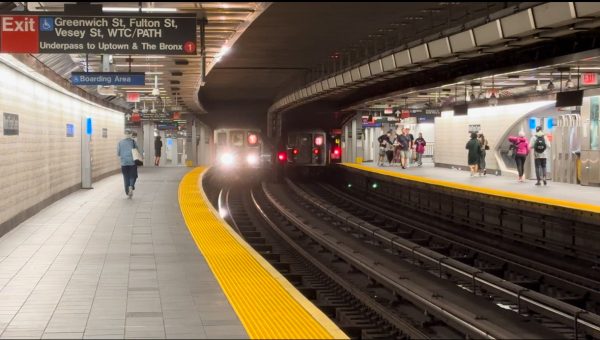
The original Cortlandt St station on the 1 line was destroyed on September 11, 2001. It took the MTA nearly 18 years to rebuild it and reopen it as a part of the World Trade Center reconstruction project, and the final part of the Oculus complex to open. The WTC Cortlandt station itself is my favorite part of the whole complex, and my favorite station in the New York City Subway. The walls are white, similar to the style of other NYC Subway stations built since 2010, but the difference lies in the wall decoration. Instead of boring panels and black text, WTC Cortlandt features rough-textured walls with embossed text about 9/11, honoring the grimmest day in the history of the city. As a fire buff who is also very interested in New York City history, the design of the walls is probably my favorite aspect of the station, but there is really nothing about it that I don’t admire.
Berlin
Honorable Mentions:
Wilmersdorfer Straße (U7)
The wall art at this station is very, very colorful and really cool. It uses a vibrant, vaguely floral motif, with red and yellow being prominent colors.
Hauptbahnhof (U5)
This station opened in 2009 as part of what amounted to Phase One of an extension of the U5 to the Hauptbahnhof (main train station). The Hauptbahnhof itself is also really unique and cool, being composed of two perpendicular levels and being full of modern design aspects and glass inside and out. The U-Bahn station is no exception. It is very brightly lit and spacious, using tones of gray throughout in a very tasteful manner.
Wittenbergplatz (U1/U2/U3)
Wittenbergplatz was a part of the original Berlin U-Bahn line that opened in 1902, and it is to this day one of the coolest stations in the system. It largely retains its original form and wall decoration, which is, as is fairly common in Berlin, very colorful.
#10: Märkisches Museum (U2)
This station has really nice wall art on the platform level, with teasers to the namesake museum. There’s a lot of historical wall art in a very angular style, and it’s also a very colorful station.
#9: Gleisdreieck (U1/U2/U3)
Gleisdreieck is somewhat uninteresting aesthetically, but because of its construction, it provides some very interesting views. It is a fully elevated station with two perpendicular platforms serving the U1/U3 and U2 lines. The station is in the middle of a park, with a bunch of museums just to the southeast. One can see the lower level through the windows on the upper level, and one can also see a bit down the line. Plus, there’s a curve to the south, so curve foamer shots abound.
#8: Rüdesheimer Platz (U3)
This station is very ornately decorated because it was built as part of a separate U-Bahn network, that of Schöneberg, before being absorbed into the Berlin U-Bahn. All of the stations built as part of the Schöneberg U-Bahn are very ornate, and this is one of the most.
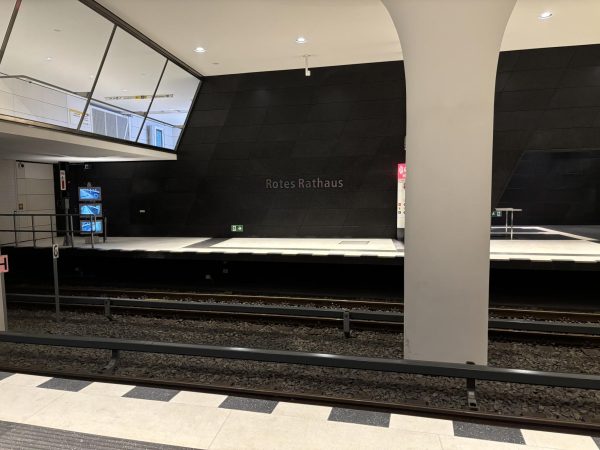
#7: Rotes Rathaus (U5)
Opened in 2020, this station is one of three on what amounts to Phase Two of the U5 extension to the Hauptbahnhof. It has a very modern design concept, full of white, gray, and black. The pillars between the tracks are almost mushroom-shaped, filling out when they get close to the roof. The station is very brightly lit, and Berlin’s yellow trains fit the aesthetic very nicely.
#6: Hallesches Tor (U1/U3/U6)
Both parts of this station, the U1/U3 and the U6 parts, are pretty standard for their respective lines. The interesting part comes on the transfer between the two. It requires crossing the Spree river, and one passes a designated busking zone on the way. As a musician, this makes me happy. Unfortunately, because I always think of good photo ops after the fact, I neglected to take a picture of this. I’ve never seen a designated busking zone anywhere else in the world. Regardless, the walk across the Spree is very pretty at sunset.
#5: Brandenburger Tor (U5)
This station has a mezzanine that leads over to the S-Bahn station of the same name. From that mezzanine there is an exit to street level in the middle of the famous Unter den Linden, directly opposite a plaza from the Brandenburger Tor itself. As one descends the escalators down to the U-Bahn, one sees famous anti-wall quotes from the time of Soviet occupation from 1946–1989, when there was a border in the middle of Berlin, splitting the city in two. It’s a very unique art installation that evokes strong feelings of national pride and defiance (at least for me).
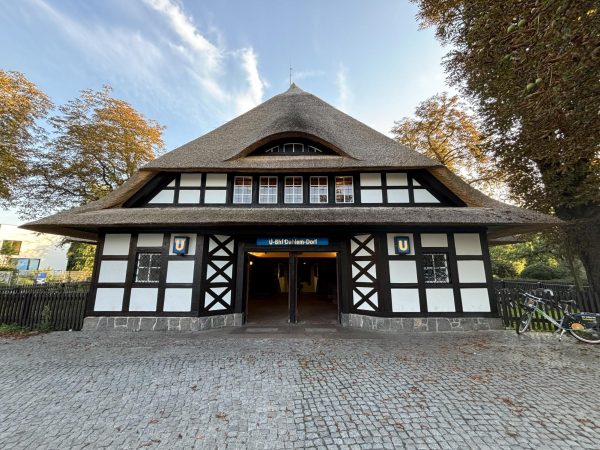
#4: Dahlem-Dorf (U3)
Yet again, a station that isn’t all that amazing at platform level. Sure, the plants visible from the platform are nice, but it’s a fairly standard open-cut U3 station. What makes this station so awesome is the station building. Originally built in 1913, the station was destroyed in 1943 because of World War II, and the station house was burned down again in 1980. When it was rebuilt in the same Fachwerk style as was originally built, there were historical plaques added within to honor the history of not just this one station, but the whole Berlin U-Bahn. It’s a very unique station house in a style that I personally really like.
#3: Klosterstraße (U2)
The lighting in this station is somewhat dim and yellowish, lending the station a very warm, homey feel. The wall art, from what pictures I have seen, is really neat, but when I was at this station, it was being renovated, so the walls were entirely exposed concrete, which is still really cool. But the best part of the station is the original 1902 subway car on the platform. (No, it doesn’t have wheels anymore.) As a foamer, this part of the station caught my eye immediately, and I made it a “must” to visit this station during my trip to Berlin. Unfortunately, the subway car was blocked from the front by dozens of bags of cement surrounded by a fence, and I heeded Ms. Hesseltine’s sage advice to not get arrested, and did not jump the fence. Instead I climbed the stairs part way up to get some pictures from the top, and I also tried to get some decent pictures from the front.
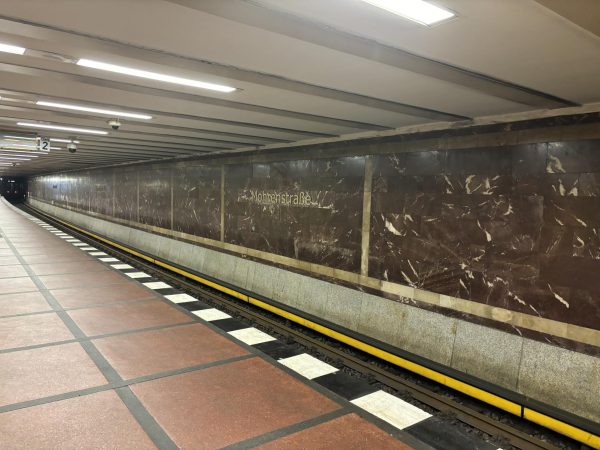
#2: Mohrenstraße (U2)
I had never seen a subway station anywhere in the world with walls decorated with slabs of black stone and rust-red trim until I visited here. I read an article in advance of my trip to Berlin about the coolest U-Bahn stations in the city, and this was on the list. My memory being iffy, I forgot what the article said about this station, and I didn’t know what to expect. But I remembered the name. When I got off my U2 train here, I was immediately amazed by the design. It was very modern and fresh, and I tend to gravitate toward design that is vibrant in color. This station absolutely fits that bill. Surely, the cool breeze I felt from the outside helped my perception, but no matter what, the design of this station is awesome.
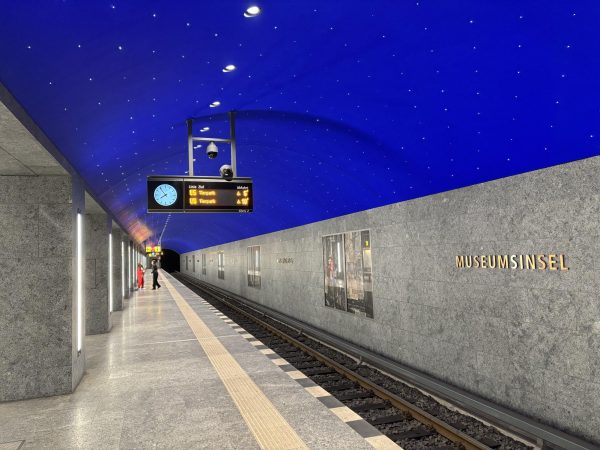
#1: Museumsinsel (U5)
This station is simply incredible. The ceiling design above the tracks is sort of like a starry night sky, with little white LED lights poking through the otherwise deep-blue ceiling. The center aisle on the platform is, once again, a very modern design concept, with gray permeating throughout and bright lighting. The columns on the platform embrace the same design as the center aisle, and have vertical lights embedded in them. I had never seen a station with such a unique design concept before, and this station also made it onto my shortlist of must-sees. I thought the starry night sky idea was ingenious and converted to reality very nicely. This station made an impression immediately and is my favorite station I have ever come into contact with anywhere in the world. Everything about it is awesome, in both senses of the word. Full marks to Berlin for this one.
Top 10 Worst (NYC Only because Berlin only has cool stations)
I only allowed myself one station per elevated line, because otherwise virtually the whole list would be filled with nearly identical elevated stations.
Dishonorable Mentions
W 4 St (A/B/C/D/E/F/M)
Nereid Av (2/5)
Classon Av (G)
#463: Kew Gardens–Union Tpke (E/F)
This station is a super standard four-track double-island-platform express station with absolutely nothing in the way of aesthetic interest.
#464: 90 St–Elmhurst Av (7)
The view is just okay, and the station itself is dreadful. It’s not falling apart, which is good, but it’s also not even remotely interesting. It looks the same as several other stations along the 7 line, all of which are more interesting for various reasons.
#465: Avenue J (Q)
This station has nice off-white walls and green trim on those walls…just like dozens of other stations. It’s not interesting anywhere, and they are common. Several stations along the Brighton Line, where this station is located, are nearly identical, but Avenue H was eliminated from bottom 10 contention due to a unique entrance in a former real estate office. Avenue J does not have that quirk, so it’s 465th on the list.
#466: 20 Av (D)
This station has those same nice off-white walls as Avenue J and dozens of other stations. It also has the same wire mesh walls as dozens of other stations. It’s a stock design that offers very little of interest, and it’s not in an open cut, where the line runs in what is essentially a really big trench, so it’s lower than Avenue J.
#467: 21 St (G)
This station is a stock Independent Subway System (IND) single island platform station. There is nothing interesting at all, save half-length trains because it’s the G train. The walls are in bad shape, the platform is in bad shape, and it’s super boring.
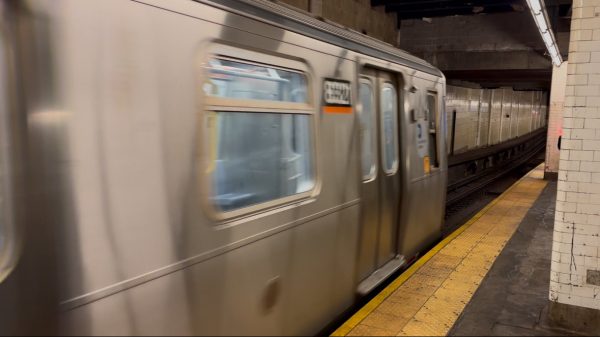
#468: Chambers St (J/Z)
The only reason this station isn’t dead last is because it’s legitimately cool, aside from the fact that it’s so dirty. This station was built in 1913 as the crown jewel of the Brooklyn Rapid Transit Company (BRT). There is water damage and filth everywhere, and there are many patch repairs because the station hasn’t been overhauled since 1913. It was worse not that long ago, but the MTA has been giving it a little bit of TLC recently.
#469: 79 St (1)
This station was once nice, but then the MTA decided to renovate it in the late 1950s as they were extending the platform, and now… it’s duller than almost every station in the rest of the system. Most everything built in the 1950s and 1960s is pretty boring, and this station is absolutely no exception. Its beige tiles and uninspired station identifiers offer nothing pleasant to look at while you’re waiting.
#470: 175 St (A)
This station is not only unbelievably boring, but also filthy. There is water damage that has accumulated for decades and fire damage from 1996 marring the already dreadfully uninteresting walls. The only interesting thing about this station that prevents it from being dead last is its connection to the George Washington Bridge Bus Station, which isn’t even within fare control.
#471: Bowery (J/Z)
This station is also fairly nice, but it’s in such horrible shape that it holds the second-to- dead-last spot on this list. The ceiling paint is peeling, the wall paint is peeling, and the tilework is fading. It would be much higher, perhaps even top 10, if it was well maintained.
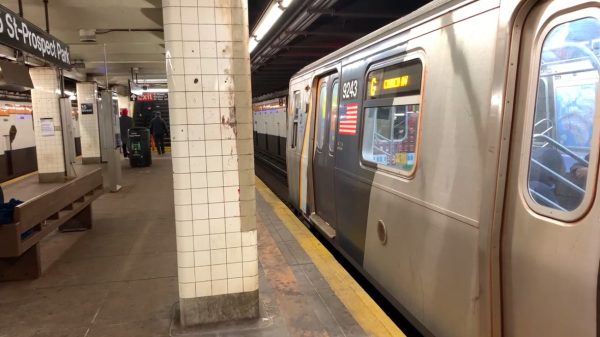
#472: 15 St–Prospect Park (F/G)
Combine the most boring of IND stations with the near-worst of station maintenance, and then you get this station. It’s wonderfully uninteresting, leaky, and filthy. The worst of all three worlds come together to create this supergroup-of-bad station.
Kevin’s List
Qualifier: This list is curated based on a more all-encompassing scale than Gareth’s list, including more factors than just appearance, such as passenger experience and occupancy in various forms. This list also only consists of stations I have been to.
Top 10 Best New York City
Honorable Mentions
West 8 St–NY Aquarium (F/Q)
This station has stunning views of Coney Island’s Luna Park and the Atlantic Ocean from the Q line platforms on its western end. On the opposite end, there’s a view of F trains curving in and out of their dedicated platforms right underneath the Q. From street level, one could even see a Q train on the upper level and F train on the lower level moving together in the same direction if timed properly.
South Ferry (1)
The new platform opened in 2009 to replace the former loop platforms above it, was damaged in 2012 by Hurricane Sandy, and was reopened in 2017. The platform is bright, modern, and aesthetically pleasing. Much of an improvement over the former loop platforms, which made for inefficient terminating operations for 1 trains and could only fit the first 5 out of 10 cars of the train.
#10: Howard Beach–JFK Airport (A)
This station was formerly in a similar style to Broad Channel, the next stop south, but was rebuilt in 2003 as part of the JFK AirTrain’s construction. There’s a modern glass building over the center of the station that serves as the mezzanine where one can, uniquely, see turnstiles to both the subway and the AirTrain side-by-side.
#9: Astoria Blvd (N/W)
There’s colorful stained glass art on the platforms and in the mezzanine along with an interesting view of the RFK Bridge at the center of the platform along with a view of trains going over a slope to/from 30 Av with the skyline of Long Island City in the background at the southern end of the platform. Those views are beautiful at sunset.
#8: 46 St–Bliss St (7)
Both ends of the station have great views, with the easternmost end having views of a curve and the street below as 7 trains turn onto and off of Roosevelt Av, and the westernmost end having views of the street below adjacent to the concrete structure which the tracks lie on. With the Manhattan skyline also visible in the background, the westernmost end is extremely beautiful and popular for photographers during a colorful sunset.
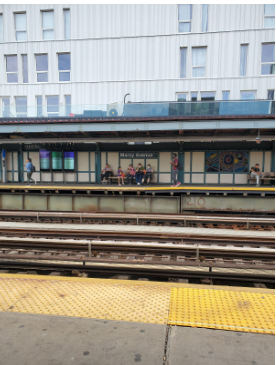 #7: Marcy Av (J/M/Z)
#7: Marcy Av (J/M/Z)
Although there is no free transfer between directions despite it being an express station and the last station before Manhattan on the J, M, and Z lines, the southern end of this station has a great view of trains turning onto and off of the Williamsburg Bridge, which is also visible.
#6: WTC Cortlandt (1)
This Lower Manhattan station was originally destroyed in the 9/11 terrorist attacks in 2001, but was rebuilt and reopened in September 2018 as part of the World Trade Center reconstruction project. This station has a unique arc-shaped entrance at the middle of the northbound platform that fits well with the modern Oculus building it’s connected to and only has columns between the tracks at the extreme ends of the platforms, allowing for an open view of almost the entire station.
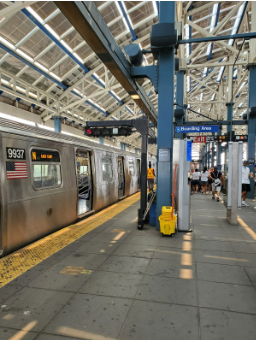 #5: Coney Island–Stillwell Av (D/F/N/Q)
#5: Coney Island–Stillwell Av (D/F/N/Q)
With eight tracks and four platforms (one for each line that terminates there), this station is a really large elevated terminal. Originally built with red canopies over each platform like a typical non-terminal elevated station, the entire station underwent major reconstruction in the 2000s and now has two thirds of all four platforms covered under an arched solar roof. As a transit enthusiast, I also find operations at this station interesting with the D and N trains arriving the station from the northern end while the F and Q trains arrive the station from the southern end, despite all four lines terminating at the station.
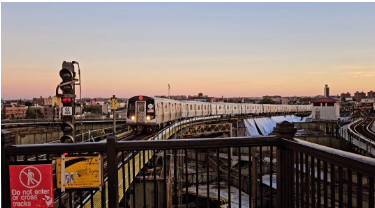
#4: Broadway Junction (A/C/J/L/Z)
This station’s architecture is very complex and fascinating. While the A/C platforms are basically a typical underground express station, the J/Z and L platforms offer unique views of many tracks that connect the two lines to the neighboring train yard and a flyover track connecting the L line track to the J/Z line track. Additionally, the back of the Manhattan bound L platform has a stunning view overlooking East New York and trains running along a curve to/from the next station south, Atlantic Av.
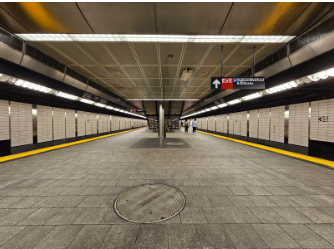 #3: 34 St–Hudson Yards (7)
#3: 34 St–Hudson Yards (7)
Opened in September 2015, this station is among the newest ones in the system, with only the three Second Avenue Subway stations on the Q line being newer. Being very deep underground, the only ways to access the mezzanines are by long sets of escalators or by interesting elevators that move on an incline rather than like a typical vertical elevator. This new gem of a station has a very wide platform without columns as well as a large mezzanine area with an arched ceiling right above the platform that leads to two upper mezzanine areas, with the main one, leading to W 34 St, also having a cool piece of ceiling artwork above the turnstyle and booth area. Outside the station are the Vessel, the Shops at Hudson Yards, and the High Line, all places where one can enjoy spending time with family and friends.
#2: Smith–9 Sts (F/G)
At 88 feet above street level, this is the highest station in the system and was the highest station in the world when built. The views from the station are phenomenal, with the most popular one being from the back of the southbound platform where one can see the Lower Manhattan skyline in the background with trains curving into the station.
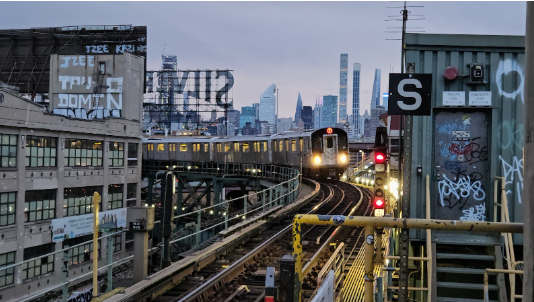 #1: Queensboro Plaza (N/W/7)
#1: Queensboro Plaza (N/W/7)
This is the only station in the system where one can transfer between a numbered train and letter train across the platform. The upper level platform offers direct views of modern residential buildings of the gentrified neighborhood the station is located in and the most popular spot for landscape photographers is the very back of the platform on the 7 train side, where trains curve in with the Midtown Manhattan skyline and Silvercup Studios sign in the background.
Top 10 Worst New York City
Dishonorable Mentions
34 St–Herald Sq (B/D/F/M/N/Q/R/W)
14 St–Union Sq (L/N/Q/R/W/4/5/6)
#463: Jay St–Metrotech (A/C/F/R)
The platforms serving the R line are extremely narrow and can easily become hazardous when crowded. Inconveniently, the exits and transfer to the A/C/F lines are only located at the westernmost end of the platform.
#464: Canal St (J/N/Q/R/W/Z/6)
The platforms serving the N and Q lines are extremely narrow and as a result, there are bars in front of the stairs leading to the J/Z platform to prevent people from accidentally rushing their way down onto the tracks. However, this causes congestion with certain train models even having a door that stops right in front of the bar.
#465: W 4 St–Washington Sq (A/B/C/D/E/F/M)
Both the upper level A/C/E and lower level B/D/F/M platforms look boringly the same and a mezzanine between them serving as a connector lacks any unique features. This station also holds a reputation for being disliked by many young women traveling alone due to a substantial number of mentally-ill individuals lurking the station often, and this is relatable based on personal experience.
#466: Grant Av (A)
The only somewhat unique aspect of this station is that the walls are a shade of green, but otherwise there are no sights to see at all in the area and it’s a very lightly used underground station, making it discomforting and eerie. In recent years however, this has slightly been improved with the installation of new LED lights in the station.
#467: 21 St–Queensbridge (F)
Other than the overpass with a view of the tracks and an interesting circular piece of infrastructure underneath it, this station lacks any remarkable uniqueness compared to the following two stations on the line which were opened at the same time, Roosevelt Island and Lexington Ave–63 St. Despite several bus transfers being located outside the station, this station easily gets sketchy and eerie after sunset, at least speaking from personal experience.
#468: Jackson Hts–Roosevelt Av/74 St–Broadway (E/F/M/R/7)
With this station being severely congested, one should attempt to position oneself at a door of the train where one would be close to a staircase and then make a rapid exit, moving as quickly as possible once the doors open, as failure to do so will very likely result in exiting the station or transferring between the 7 and E/F/M/R through long, slow-moving lines.
#469: Chambers St (J/Z)
This station was opened in 1913 by the former Brooklyn Rapid Transit Company (BRT), as a major transfer point between various former services featuring five platforms and four tracks. Today, only two of the tracks and two of the platforms remain in use for just two lines and the station has fallen into extreme disrepair. Efforts to improve the station’s quality have been made with new elevators having been installed at the southern end of both platforms in 2020 and as of 2023, the MTA has announced that the station will undergo a major renovation while being “historically sensitive” to some of the station’s historic features, as it is listed on the National Register of Historic Places.
#470: Bowery (J/Z)
This station has fallen into extreme disrepair; it is in dilapidated condition and is very lightly used compared to the following stations on the J/Z lines in both directions due to them being transfer points while Bowery isn’t one. Behind the wall on the Brooklyn-bound track, there is an abandoned platform that has been closed to the public since 2004 which was also rapidly falling apart, but has since been restored in the mid-2010s to be reused for private events and filming purposes. Strangely enough, said abandoned platform is now in much better condition than the platform still used for active passenger service.
#471: Hunters Point Av (7)
Among all stations on the 7 line, this one sees the lowest ridership, with there being nothing in the surrounding area of the station other than a few residential apartment buildings, an abandoned diner, and a Starbucks. This station is empty the vast majority of the time and can evoke a sense of eeriness, especially after sunset.
#472: 125 St (4/5/6)
This station is very well known by those who utilize it on a regular basis as the drug epicenter of the system. The neighborhood the station is located in has severely declined since the COVID-19 pandemic and traversing the station is very likely to evoke feelings of emotional distress and discomfort.
Seoul
#10: Yeongdeungpo (1)
Along with many tracks and platforms for different variants of service on just a single line, this station also features a direct exit/entrance into a popular shopping center.
#9: Hongik University (2)
While this station easily gets congested with the sheer number of students from the university outside utilizing it, it features moving walkways like ones that would typically be found at airports, which connect the 2 line platforms to a commuter rail line and the Airport Express train service.
#8: Gwanghwamun (5)
While the platform itself is typical of one on the Seoul Metro, this station features a unique, wide entrance/exit built with a ramp leading up to the middle of Gwanghwamun Square, an iconic public square that serves as a historical landmark.
#7: Chungmuro (3/4)
Instead of being built as a typical island platform, the 3 line platforms are designed so that each direction is separated into its own side platform and the path located at the center of both platforms serve as connections to the 4 line platforms.
#6: Oksu (3)
Like Dangsan on the 2 line, trains on the 3 line also enter/exit the station on one end through the usage of a bridge crossing over the Han River. This station has a transfer to a commuter rail line as well, which crosses perpendicular at street level to the 3 line running overhead on the bridge.
#5: Banpo (7)
This station has a fascinating exhibit in a passageway leading to some of the exits in the mezzanine that details the Seoul Metro’s history. Opposite of the exhibit, there’s a lounging area with a model train set on view as well.
#4: Guil (1)
This station is located on a bridge, with exits on both ends leading to the streets on opposite sides of the bridge. Interestingly, this local station has two levels, with local trains in one direction stopping at an upper level platform while trains in the opposite direction stop at a lower level platform. Express trains bypass an island platform on the lower level of the station that doesn’t have platform doors, which appears to only be accessible to employees.
#3: Hanyang University (2)
Despite being on street level, this station is located inside its own building. The mezzanine is located above the platforms, allowing one to walk from the same level as the tracks to above the tracks by climbing the stairs leading from the street to the mezzanine.
#2: Dangsan (2/9)
This 2 line’s station is cool in that trains enter/exit the station on one end through the usage of a bridge crossing over the Han River, offering great views of the city’s skyline without obstructions.
#1: Dongdaemun History & Culture Park (2/4/5)
Very unusually, this station features an easy transfer between the 2 line and 4 line, with only a single staircase required to reach the 4 line platform from either of the 2 line platforms. Most other transfers on the Seoul Metro require treks through long passageways (even longer than many on the NYC Subway), as all nine lines are isolated from each other. Outside the station, there is a fascinating modern plaza with a large, unique, oddly-designed gray building that captures the eye of many passing by.

